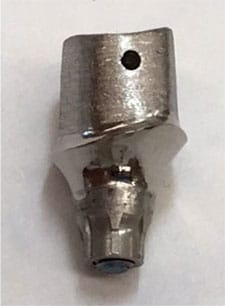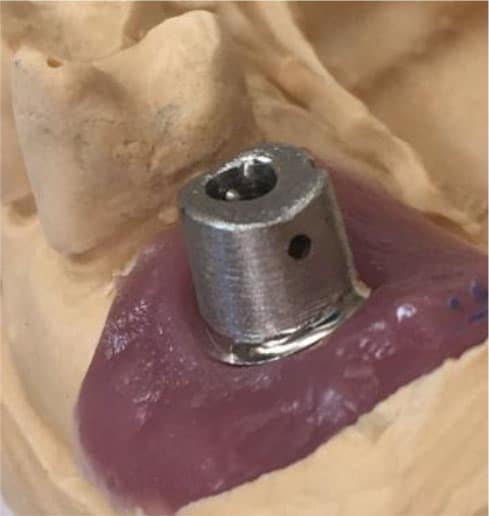At Klausz Dental Laboratories, we believe you deserve the very best in quality, with the most advanced designs possible. Our custom implant abutments have key features you may not find anywhere else.


The advantages of cemented retained implant crowns includes improved aesthetics, better control of occlusion and contact areas, ideal margin positioning for a more accurate emergence profile, and in general, cementing implant restorations onto abutments more closely follows procedures routinely performed on natural teeth. However, cement retained implant restorations are not without their issues. Multiple case reports have cited excess cement, left in the subgingival sulcus area, can be a major cause of peri-implantitis.
Clinically, excess hardened cement, left below the tissue surface, can be difficult to detect and remove. It has been hypothesized that this cement can act as a seeding layer onto which bacteria can colonize. The amount of cement needed to cause disease has yet to be established, but it would seem reasonable that reducing the volume extruded to a minimum is advantageous.
Additionally, these vents act as an internal reservoir for cement that may otherwise be extruded through the abutment-crown margin. As well, leaving the screw access channel open with or without abutment venting improved the retention of the cemented coping. Placement of two vent holes significantly improved retention by altering cement flow within the screw access channel. Fabrication of implant abutments with some form of internal venting should be considered whenever a screw access channel exists.
This is why, at Klausz Dental Laboratories, all our metal custom abutments include axial wall vent holes.


Recent Comments